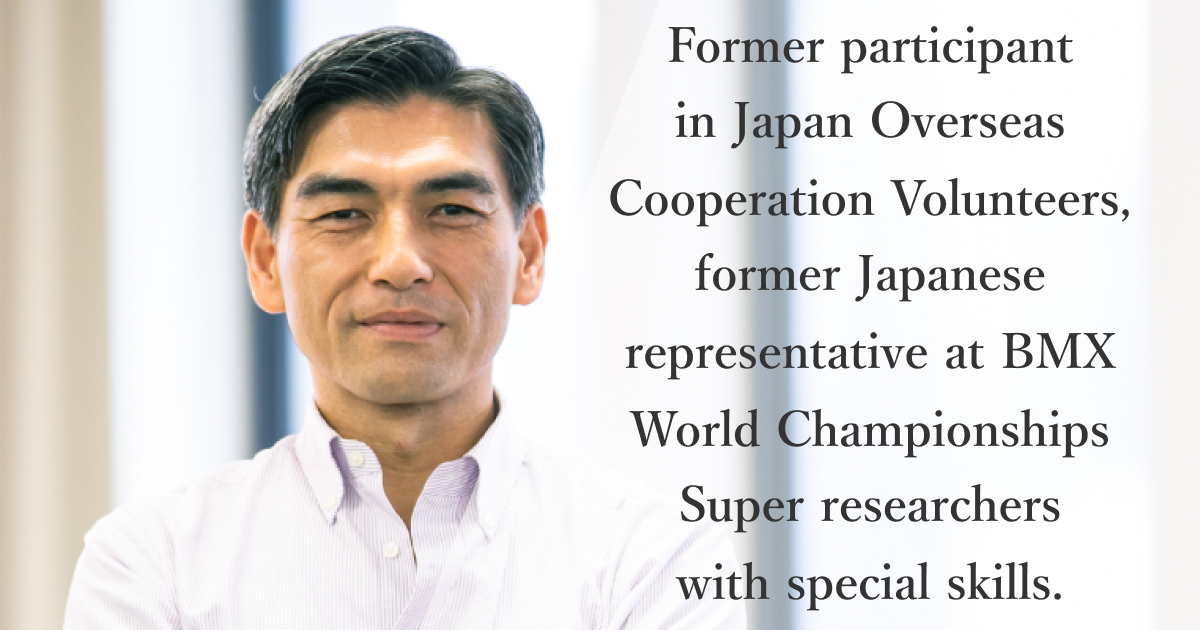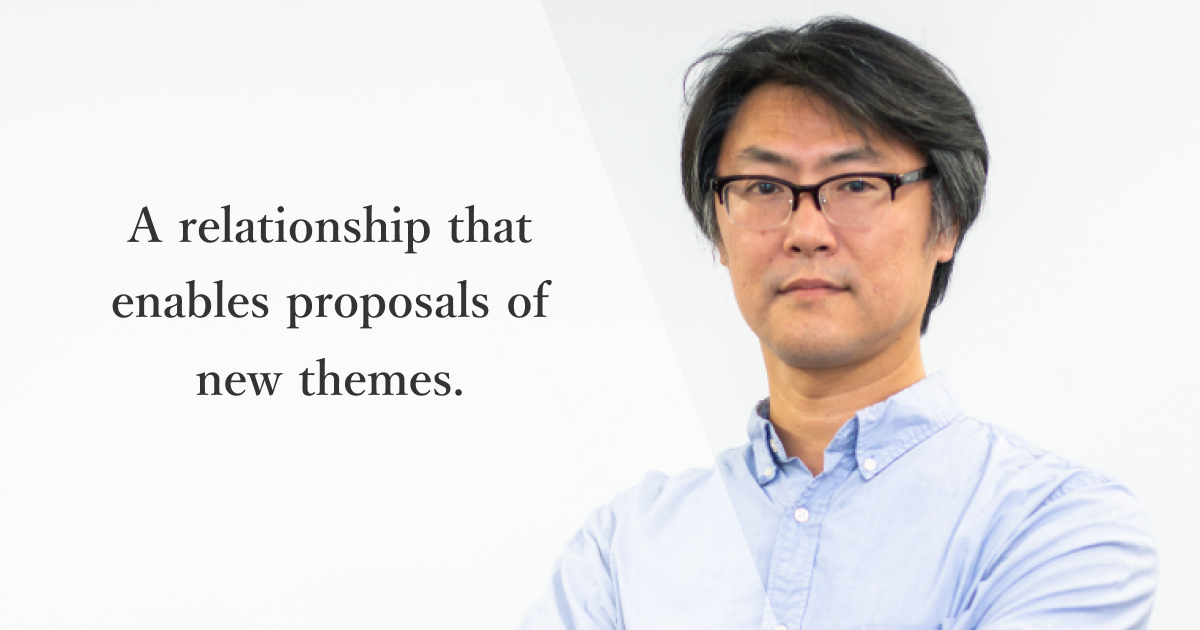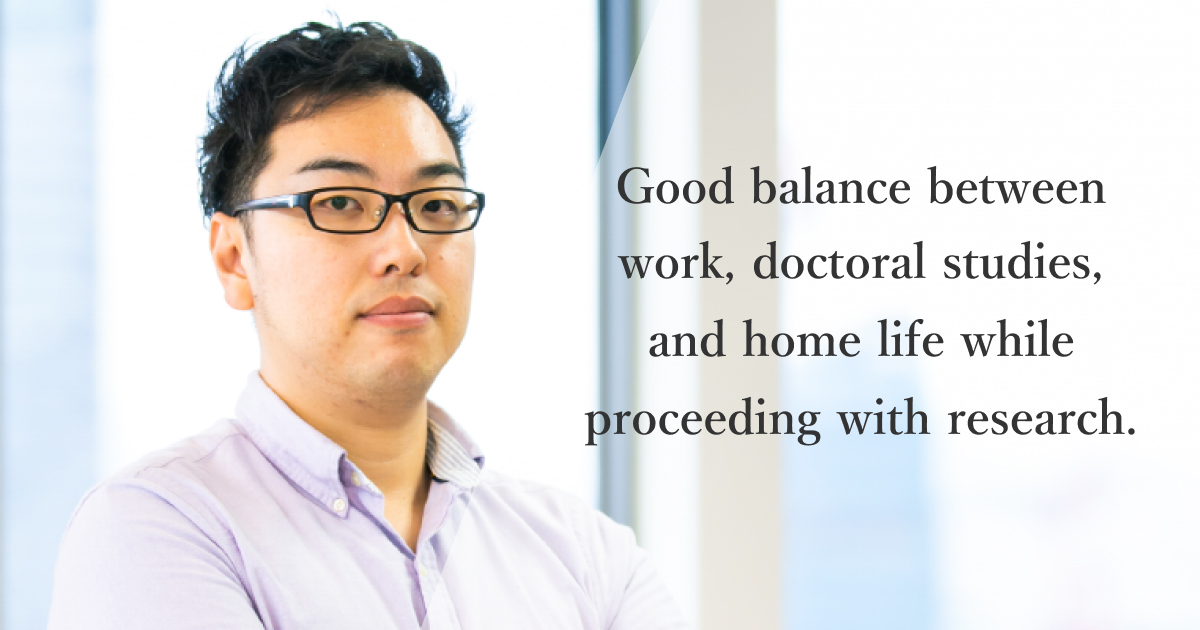Research and Development Group Senior Researcher
Signal
Processing
Koichiro Suzuki
Koichiro Suzuki
PROFILE
Joined company in 2002
SI Web Programmer
A cooperative relationship enabling quick release of new technology into the world
Mr. Suzuki is a man of many hats. In addition to working as an engineer pursuing research and development in the field of signal processing, he also performs as a bassist in his own band. On top of that, he is a devoted husband who shares the housework with his wife, a full time worker herself. Given his unique perspective, we asked Mr. Suzuki about the appeal and work style of DENSO IT Laboratory (hereafter IT Lab).
Catching sight of the DENSO name

My graduate school research was into expression through databases. In actuality, there is a gap between the theoretical beauty of databases and their ease of use. It’s thus important to explore how theoretical constraints can be assuaged to increase usability. I was focused on building databases that anyone would find easy to use.
After graduation, I joined a major systems integrator, because I felt that my research would be useful there. However, compared to when I was doing research, the daily routine of simply executing tasks that I was assigned every day always left me feeling unfulfilled. After working there for a year, the next job I chose was as a web programmer. I had always liked programming. At the time, I had wanted to gain familiarity with every programming language I could, so I would read through reference books and try my hand at programming outside of work hours. I was highly motivated then, but after a year, the company changed direction and I was forced to resign. I then thought about continuing with programming as a career, but gradually, I began to feel that the change in employment was a chance to find work that was a bit more creative and I chose to focus on research.
When I began looking for work on the internet, I caught sight of the name “DENSO IT Laboratory”. Since I’m from Gifu, I was already familiar with DENSO as a company, but I was even more attracted by the fact that they had gone to the lengths of creating a child company that was focused entirely on research.
Broader application of research into millimeter-wave radar
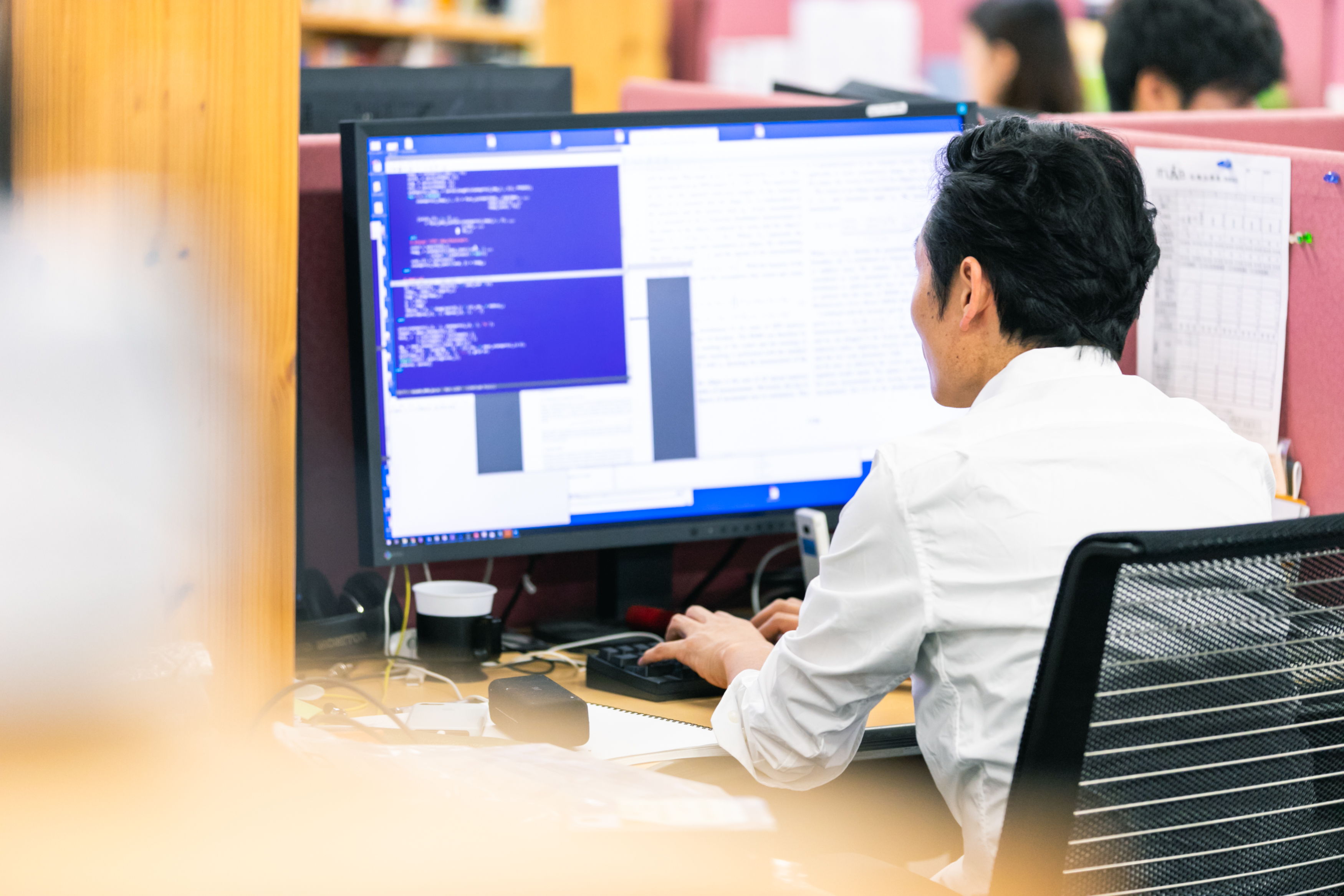
Since joining IT Lab, I have mainly focused my research on radar and things associated with it. The time when I began research, in the early 2000’s, was the early age of radar being used in onboard products. Today, however, those products are included in nearly all automobile types. Radar is one of the sensor types indispensable to the establishment of autonomous cars, and even greater development is anticipated in the future.
As one possibility, I am currently looking into the utilization of millimeter-wave radar, technology that is already used with driving environment recognition sensors. Originally, millimeter-wave radar was used to detect the location and relative speed of target objects, but thanks to the improvements in range resolution achieved by expanding the usable frequency band, as well as the expanded bearing resolution achieved by greater diversity of elements and improvements to signal processing systems, the potential exists to detect shape and size as well. In addition, by using certain features of radar signals that were not possible with traditional detection processing, we will soon be able to distinguish what sort of physical object is being detected, for example whether it’s a vehicle or not. If that happens, we will have become able to detect pedestrians with radar, in addition to image sensors. Further, by combining both sensors, we will be able to enable detection at greater distances, as well as harsher conditions, such as thick fog, snow, and bad weather.
DENSO and IT Lab
With themes like this that are related to automobiles, I tend to receive direct requests from DENSO, but I’m never forced to do anything. Of course, there are times when I select my own research themes, too. In particular, I’ve worked with the R&D department at DENSO since joining the company and we have a more than ten-year relationship of trust between us. Moreover, from the very beginning, the role of IT Lab has been to explore issues that were too difficult to be handled by DENSO’s research and development department, or to do experiments with themes that could prove useful in the future, but about which the groundwork has not been established. In some ways, it’s as if we’re consultants under contract to do specialized research.
For that reason, we’re never forced to handle clearly impossible tasks or to change white into black. Even if we don’t achieve the desired results, as long as we’re able to give a clear reason, such as that there are limitations with device performance or statistical limitations, the people on the other end of the request are engineers too, so they understand. I feel like I’m blessed to work with people I can communicate with.
We release our research results and DENSO realizes them as products. Both sides pursue their roles with vigor and as such, we’ve established a cooperative relationship that enables us to put new technology out into the world. For example, once a year, all the researchers at IT Lab go to DENSO Headquarters and present or exhibit our daily research results. When we do so, we have the chance to make direct contact with several departments who handle a variety of themes, so that becomes a good opportunity to learn about new market needs and new devices. In addition, I can hold discussions with other engineers at any time and new research emerges from that.
From that interaction, as well as our regular project meetings and beyond, we have a fairly close relationship with DENSO.
The importance of identifying research with promise
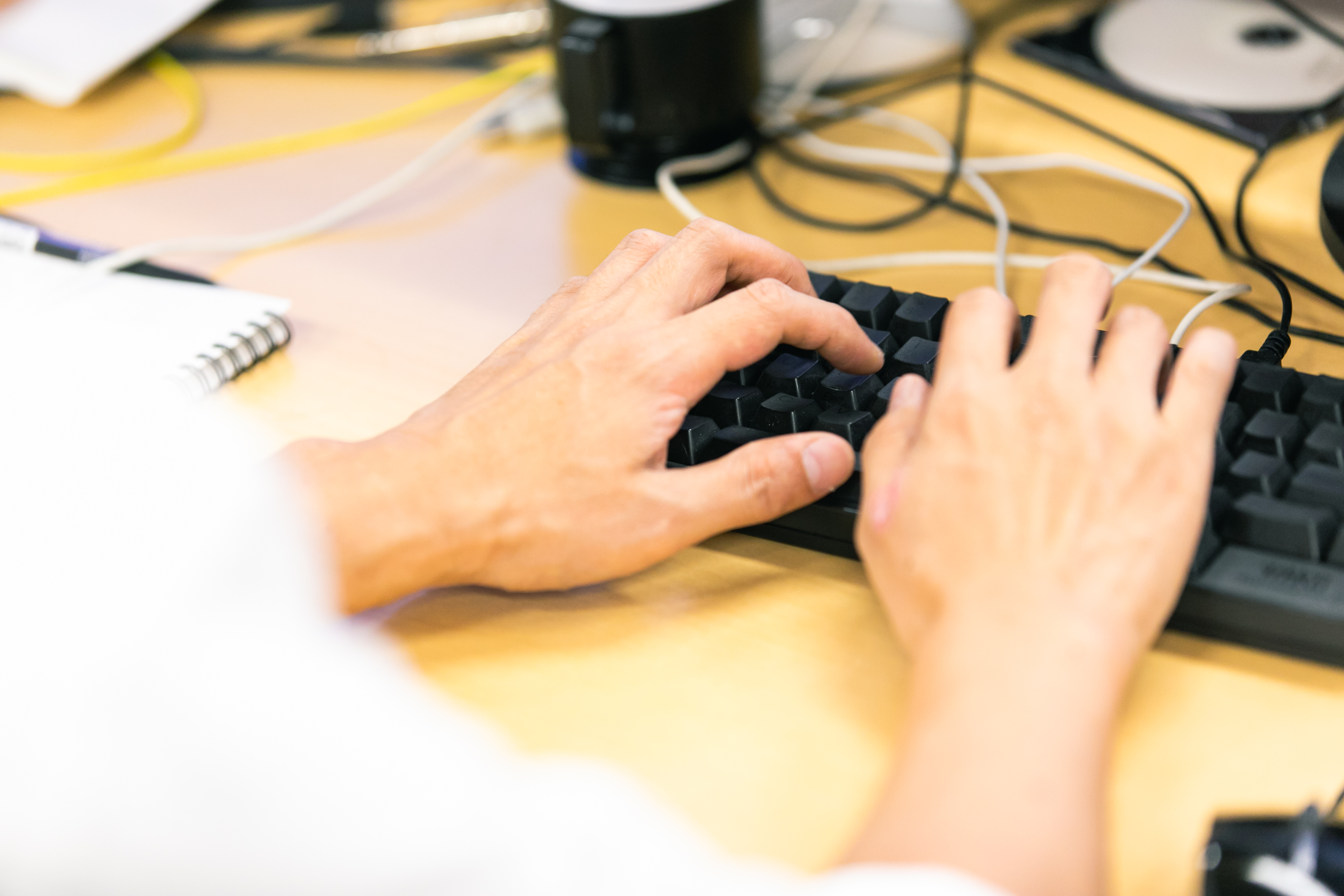
As a researcher, I have not always had, from a young age, the strength to see things through to the end. When I first joined the company, I was happy just to receive requests, but I also tried too hard to meet expectations. There were even cases where I tried to achieve the results that DENSO sought and accumulated detailed variables and values, only for them to not add up to an answer in the end. Naturally, there are time limits for when our results must be reported and that can lead to impatience. I’ve had multiple experiences where that led to trouble.
Perhaps because of the failures I experienced, I developed the ability to spot research that wasn’t going in the right direction. I have developed the habit of being aware of current technological or theoretical limits, and converging my research so that I am able to meet deadlines. While it’s nice to really dive into a single theme, I feel that it’s a plus that we’re able to set an end point and move on to the next area of research. There are also cases where we return to something later and make new breakthroughs.
Coworkers inspiring one another
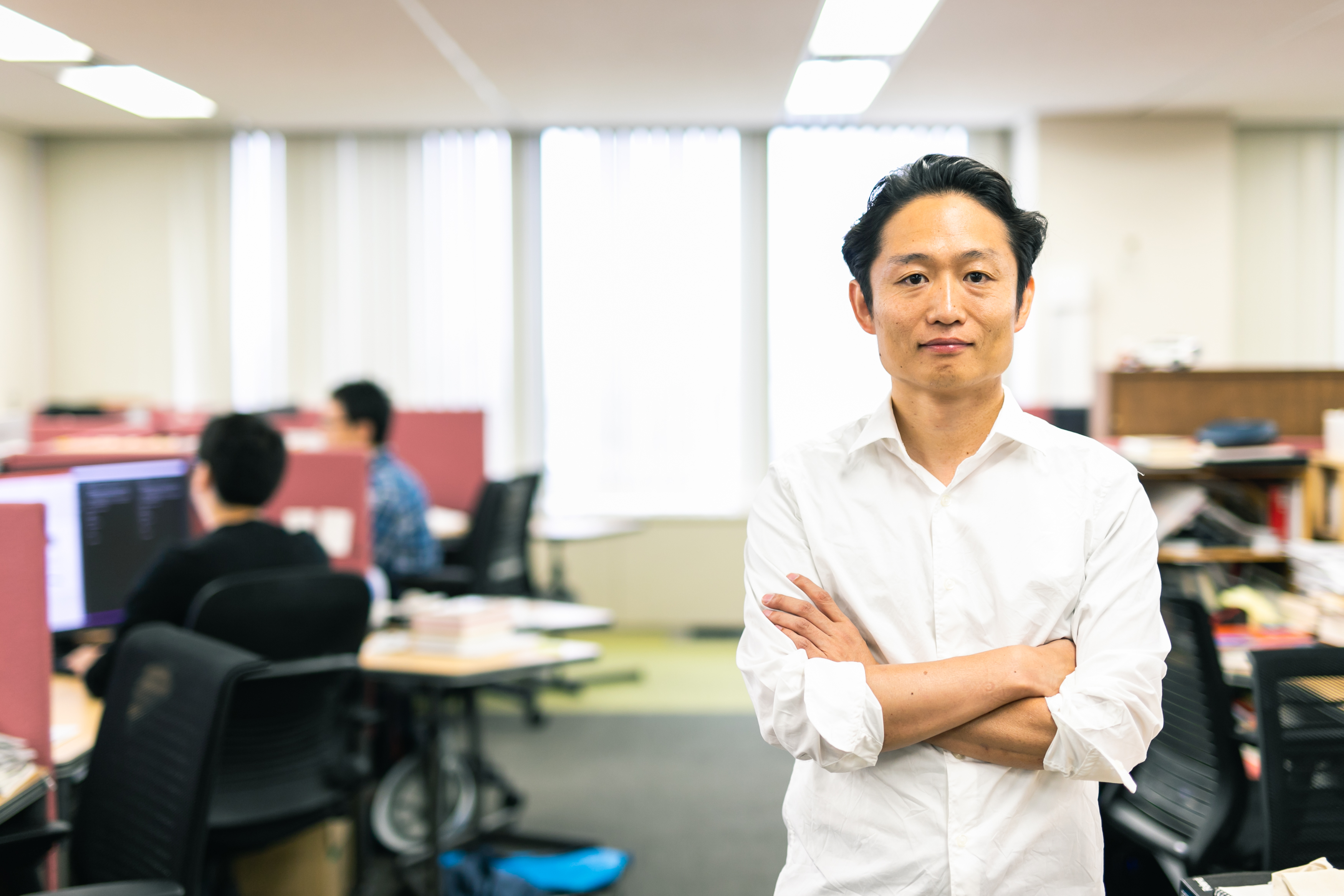
Whenever my research becomes stalled, I’m rescued by the words of my coworkers. The office has free seating in general, but the open space tends to be where we interact the most. There are many white boards that you can make free use of. I use them often, myself. Just by moving to a different space, you can make new discoveries. It has become a regular occurrence for me to write formulas on white boards and see my coworkers look on with interest and ask me questions, leading to rich discussions. Everyone has different research fields, such as time series analysis and image processing, so everyone can give opinions from different perspectives. I’m grateful to have this environment for frank discussion that’s almost like a daily chat.
No need for dramatic results
In research, the important thing is to steadily clarify issues according to rules and principles. There’s no need for dramatic results immediately. I believe that it’s only after solving each formula and clarifying each phenomenon that the technology and devices that carry the future will be born. Of course, that probably reflects my own personal sense of enjoyment at solving formulas (laugh).
But I also have the feeling that, as a lone researcher, I would like to create something that does not exist now, but five or ten years later will make the world a better place. My research is ultimately a case of state estimation, so there is no need to ask where automobiles fit in to that target. It could be based on the feelings of the driver or what the driver is thinking. If the automobile can learn to detect those states, for example by shooting a photo of the driver’s tired face and showing it to them along with a recommendation to take a break, or having exhaust notes sound at times when you’re enjoying your drive and want to go fast, this will mean that the car is adjusting to the driver’s emotions, and reading the driver’s intentions. I’d like to make everyone’s driving a more enjoyable experience.

